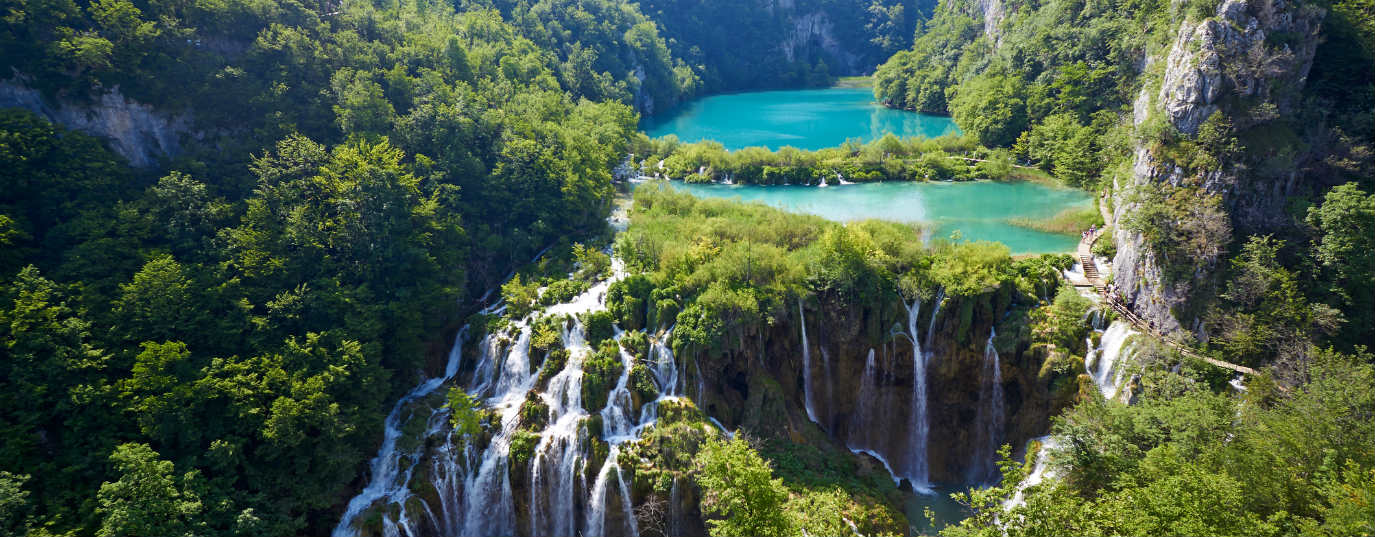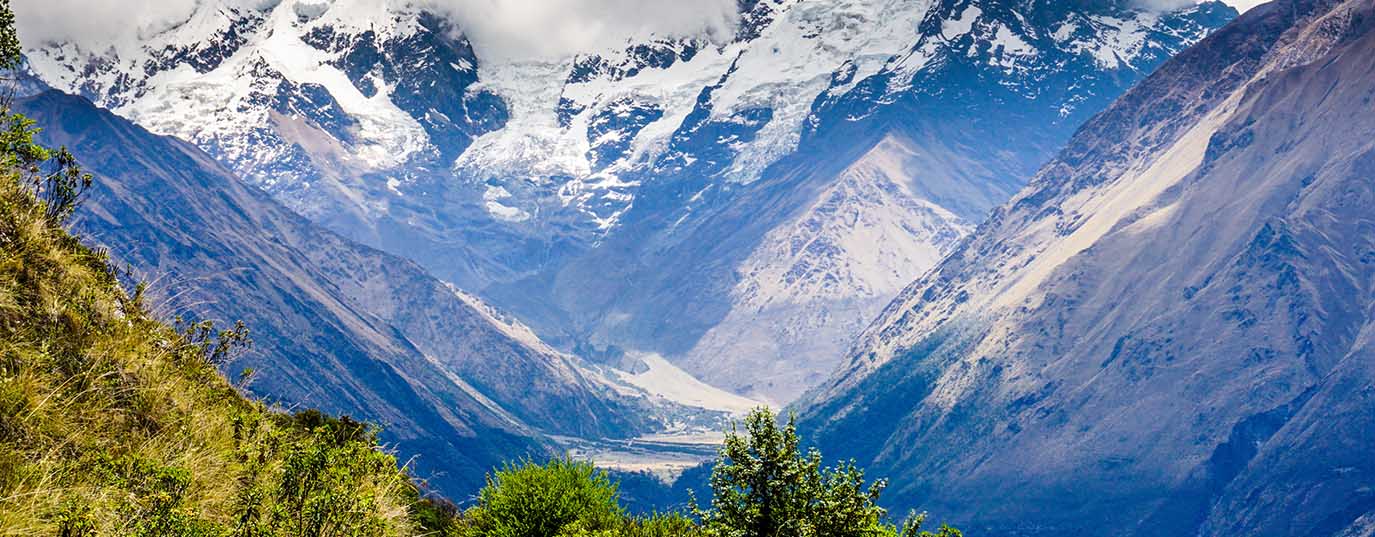Marine protected areas
Discover some of the world's most important marine protected areas in this gallery
What is a marine protected area?
The marine protected areas (MPAs) are seas, oceans, lakes and estuaries that have special preservation measures. Human activity is usually restricted or limited to ensure its conservation and the protection of natural, cultural and economic resources.
The protection of these areas depends on the public administrations with different reach. Do you want to know some of the most important MPAs in the world? In this gallery we show a selection.
Great Barrier Reef Marine Park (Australia)
Known also as the oceanic equivalent to the Amazonia, the Great Barrier Reef is the only living thing on the planet that can be seen from space. In addition, since 1981 it has been classified by Unesco as a World Heritage Site.
It is an inexhaustible source of natural wealth... and economic resources, since the many recreational activities generate significant benefits for the state of Queensland. However, global warming threatens to destroy the Great Barrier Reef if the global average temperature increases by two degrees Celsius.
Area: 345 square kilometers
Established: 1975
Website: http://www.gbrmpa.gov.au/
Dry Tortugas National Park in the Florida Keys (United States)
The Dry Tortugas National Park is located to the west of the southern tip of Miami, made up of seven islands of coral reefs, sandbars and crystal clear waters. The area shelters a large number of marine species, but also birds and land animals.
With a great cultural heritage that goes back to the time of the Spanish conquistadors, Dry Tortugas also offers an extensive catalog of leisure where diving and boat excursions stand out.
Area: 261.84 square kilometers
Established: 1935
Website: https://www.nps.gov/drto/index.htm
Wadden Sea National Park (Germany, Netherlands and Denmark)
Included within the protected wetlands of the Ramsar Convention and listed as a World Heritage Site by Unesco since 2009, the Wadden Sea National Parks are a single ecological entity that extends across three countries: Germany, the Netherlands and Denmark and the Frisian Islands off the European coast.
It is mainly composed of shallow water on muddy beds and in fact it is possible to cross walking from the mainland to the islands when the tide is low. Its great biological attractiveness lies in the flora and fauna that it shelters.
Area: 14,950 square kilometers
Established: 1982
Bowie Seamount Marine Protected Area (Canada)
The Bowie Seamount Marine Protected Area is located about 180 kilometers off the coast of British Columbia and last erupted 18,000 years ago.
Its mountainous bed is home to hundreds of marine species and receives the nickname of Oceanic Oasis. The oceanographic interactions between the sea currents and the submarine ridges offer one of the greatest riches of nutrients of the planet that attract banks of halibut, cod or rockfish, among many others.
Area: 6,131 square kilometers
Established: 2008
Website: http://www.dfo-mpo.gc.ca/oceans/mpa-zpm/bowie-eng.html
Ligurian Sea Cetacean Sanctuary (Italy, Monaco and France)
Representing another model of collaboration between states, the Ligurian Sea Cetacean Sanctuary runs along the southeastern coast of France, the Principality of Monaco, the northwest coast of Italy and extends to the north of the island of Sardinia encompassing the whole island of Corsica.
It is an area dedicated to the protection of marine mammals, especially fin whales and is also the only international animal reserve in the world today. It is also a source of income for France and Italy, which organize cruises for whales sightseeing.
Area: 84,000 square kilometers
Established: 1999
Channel Islands National Marine Sanctuary (United States)
Located off the southwest coast of the state of California, the Channel Islands National Marine Sanctuary hosts a large number of marine species, many of them endangered, including killer whales, whales, sharks, turtles or abalone.
There is currently a research and outreach program to warn of the dangers facing the sanctuary, such as the introduction of invasive species, acidification of the ocean, water pollution or tourist overexploitation.
Area: 3,800 square kilometers
Established: 1980
Website: http://channelislands.noaa.gov/
Phoenix Islands Protected Area (Kiribati)
The Phoenix Islands are in the middle of the Pacific Ocean and belong to the small nation of Kiribati since 1983. Its waters host more than 800 species of fish, birds and corals and since 2010 it is also a World Heritage Site designated by Unesco.
However, the entire inland lagoon of the atoll disappeared completely in 2003 after a rise of one degree Celsius in the water temperature during the El Niño meteorological phenomenon, reaching 31 °C in some points.
Area: 408,250 square kilometers
Established: 2008
Chagos Marine Protected Area (British Indian Ocean Territory)
The Chagos archipelago became the largest marine protected area in the world in 2010, not without controversy, since it is the United Kingdom that manages the area despite the international claim of the Republic of Mauritius, which claims Chagos as a part of its territory.
One of its great treasures is a varied coral that enjoys excellent health, but also houses turtles of various kinds that each year deposit between seven hundred and fifteen hundred eggs on its beaches, as well as almost eight hundred species of fish.
Area: 640,000 square kilometers
Established: 2010
Website: http://chagos-trust.org/
Photo: Anne Sheppard
Papahānaumokuākea Marine National Monument (United States)
The marine protected area of Papahānaumokuākea, northwest of the Leeward Islands of Hawaii, is part of the second largest protected natural area in the world, the Papahānaumokuākea Marine National Monument, comprising more than one million and a half square kilometers of islands and atolls with unparalleled natural and cultural diversity.
Dolphins, seals, mollusks, corals or inland lagoons are just some of the marine riches of this area, declared a World Heritage Site by Unesco in 2010. In addition, it has its own ocean cleaning program with which they have managed to remove more than 45 tons of garbage in the last decade.
Area: 360,000 square kilometers
Established: 2006
Website: http://www.papahanaumokuakea.gov/
Coiba National Park (Panama)
Located off the southwest coast of Panama, Coiba National Park and its special marine protection zone offers protection to the island of Coiba, other 38 islands and smaller islets and all the surrounding water.
Its geographic location allows the area to avoid the typical adversities of the zone like El Niño or the currents of cold wind, which allows its marine fauna, composed of species of pelagic fish and marine mammals, to inhabit in great number in this protected area.
Area: 2,701.25 square kilometers
Established: 2004
Website: http://www.panamatours.com/Rainforest/coiba_eng.htm
Sian Ka’an (Mexico)
For the natives of the Yucatan peninsula, the Mayan name of Sian Ka'an meant "origin of the sky", something that is easy to understand when observing its 5,281 square kilometers of tropical forests, marshes, wetlands and a reef barrier.
The marine protected area of Sian Ka'an occupies approximately one-fifth of this biosphere which accommodates a multitude of aquatic and terrestrial species. However, the increasing inrush of tourists poses a threat to the balance of the place.
Area: 1,200 square kilometers
Established: 1986
Website: http://www.visitsiankaan.com/
Photo: Alex Proimos
iSimangaliso Wetland Park (South Africa)
The largest estuary in Africa is located at the mouth of the Tugela River, on the east coast of South Africa, and its marine area runs along 155 kilometers of coastline with a width of five kilometers.
Nearly a thousand species of fish, more than fifty types of coral and more than eight hundred kinds of molluscs compose a fauna that also poses a source of income for the zone since it hosts leisure activities like diving, canoeing, fishing or whale watching.
Area: 3,286 square kilometers
Established: 1999
Website: https://isimangaliso.com/
Sundarbans National Park (India)
On the northeast coast of India, the Sundarbans National Park is also a tiger reserve, biosphere reserve and protected marine area covering a total area of over ten thousand square kilometers.
Its marine area, nestled in the Ganges River delta, is home to hundreds of unique species including sawfish, butter fish, electric rays, silver carp, starfish, common carp, horseshoe crabs, prawn, shrimps, Gangetic dolphins, skipping frogs, common toads and tree frogs.
Area: 1,330.1 square kilometers
Established: 1984
Website: http://www.sunderbans-national-park.com/
Sources: National Oceanic and Atmospheric Administration, Fisheries and Oceans Canada, Australia, National Geographic, International Union for Conservation of Nature, Papahānaumokuākea, International Union for Conservation of Nature II, Unesco, EcuRed, Channel Islands, Maestro Green, Teorema Ambiental, Universo Marino, Unesco II, Unesco III, MPA Global, Fundación Aquae, Unesco IV and Lonely Planet.






